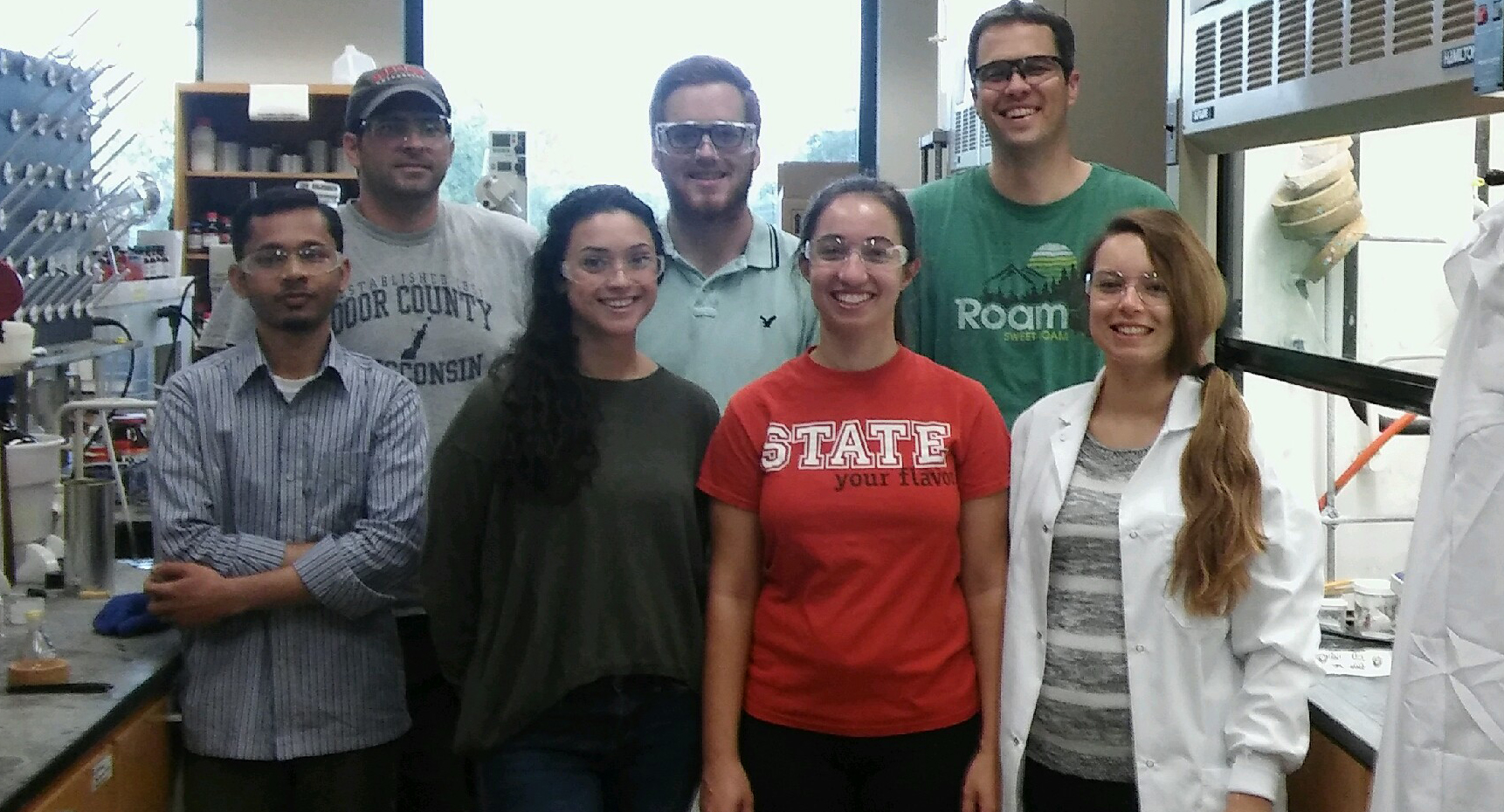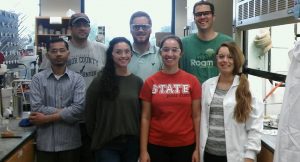Illinois State University Associate Professor of Organic Chemistry Andy Mitchell has been awarded a $210,000 grant from the National Science Foundation (NSF) to help students create new compounds in the laboratory.
Mitchell leads undergraduate and graduate students in “organic synthesis” research, which is using chemical reactions to make organic compounds in the laboratory. Organic chemistry is the study of carbon-based molecules that are the basis for all lifeforms, such as plants and animals.
Under Mitchell’s guidance, students will create new organic compounds, and work toward publishing and presenting their work nationally. “In the midst of the lab work, we are educating students to think not just about chemistry, but about critical analysis and problem solving,” said Mitchell. “Students will carry these skills on to the next step—medical school, the chemical industry, earning a Ph.D.—and throughout their lives.”
The three-year grant is specifically targeted to allow students to explore working with what are called [5+2] Cycloadditions. “These are a form of reaction that are pretty efficient,” said Mitchell, who noted “cyclo” means ring. “We are chemically forming rings. A lot of biologically active molecules have rings in them, and Cycloadditions allows us to combine two flat things together in an efficient way toward a three-dimensional product,” said Mitchell, adding, “Three-dimensional molecules are tremendously important in organic chemistry and in all biomolecules.”
The concept of efficiency is important to the grant and to Mitchell. As his students try to create a series of three-dimensional rings using this particular method, they keep in mind that one of the major goals of the lab is to design reactions that are useful to other scientists in their work. “I compare it to a computer programmer,” said Mitchell. “If you write programs, you want people to use them. So if you develop new compounds or reactions, you want people to use those reactions.”
The NSF grant will fund research for about six students to work in Mitchell’s lab and pay for chemicals, which can be expensive. “It’s mentoring, so I cannot have 20 students in the lab,” said Mitchell. “They need to be able to knock on my door and say, ‘This worked,’ or ‘This didn’t work.’ It’s much more analogous to the classic apprenticeship where people learned a skill or trade by working day in and day out with a mentor.” Mitchell added that this fits well with the philosophy of Illinois State’s Department of Chemistry. “We pride ourselves on allowing the students to experience authentic research, but with a lot of attention. My colleagues and I love to teach and work with the students.”
The grant also allows for continuing work with the University’s Illinois Summer Research Academy. The unique program, sponsored by Illinois State’s Center for Mathematics, Science, and Technology (CeMaST), allows high school freshmen, sophomores, and juniors to spend a week with Illinois State professors working on various hands-on research projects. Undergraduates and graduate students have participated in past summers as mentors to the high school students under the direction of Mitchell.
To reach Mitchell, contact MediaRelations@IllinoisState.edu.


